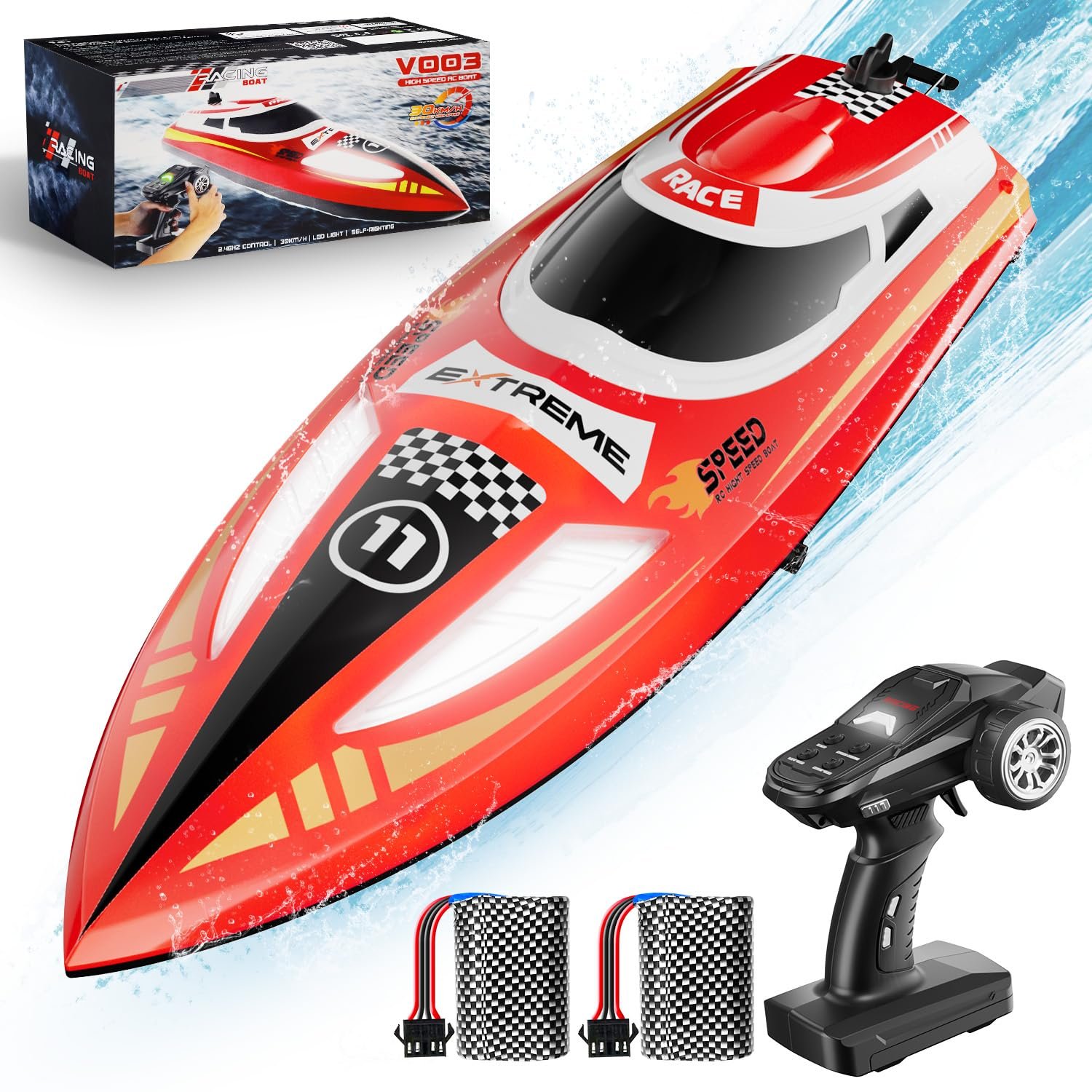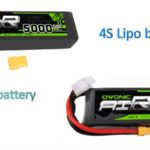You try to enjoy a sunny day with your remote control boat. But it doesn’t work.
Frustrating, isn’t it? A remote control boat not working can spoil the fun. There are many reasons behind this issue. It could be a problem with the batteries, the remote, or even the boat’s internal parts. Understanding the cause is key to fixing it.
In this blog post, we will explore common issues and solutions. This will help you get your boat back on the water. Whether you are a beginner or an expert, these tips will be useful. Let’s dive in and solve the problem together.
Common Issues
Remote control boats can be a lot of fun, but they sometimes stop working. Understanding common issues helps you fix the problem quickly. Here, we explore two main issues: battery problems and signal interference.
Battery Problems
Battery issues are common with remote control boats. A dead battery is the most obvious problem. Check if the battery is charged. If the boat still does not work, the battery might be old. Old batteries lose their ability to hold a charge. Replace the battery if needed.
Sometimes, the battery connections can be loose. Ensure the connections are tight. Also, make sure the battery is inserted correctly. Incorrect insertion can cause problems. Clean any dirt or corrosion from the battery contacts. A clean connection ensures proper power flow.
Signal Interference
Signal interference can also cause problems. Many devices use the same radio frequencies. This can disrupt the boat’s signal. Move to a different location with fewer electronic devices.
Check the antenna on your remote control and boat. A damaged or bent antenna can weaken the signal. Straighten the antenna if it is bent. Replace it if it is damaged.
Ensure you are within the range of the boat. Being too far away can also cause signal loss. Stay close enough to maintain a strong connection.

Credit: www.youtube.com
Checking The Battery
When your remote control boat stops working, one of the first things you should check is the battery. It’s often the root of the problem and can be resolved quickly. Let’s go through a few steps to ensure your battery is in top shape.
Battery Charge
First, check if your battery is fully charged. A low or dead battery is a common issue. Ensure you have charged the battery according to the manufacturer’s instructions.
Use a voltmeter to check the battery voltage. Compare it with the recommended voltage range. If it’s below the required voltage, it’s time for a recharge.
Consider investing in a high-quality charger. It can make a significant difference in the battery’s longevity and performance.
Battery Connections
Next, inspect the battery connections. Loose or corroded connections can prevent your boat from working correctly.
Ensure the connectors are tight and secure. Wiggle them slightly to check for any looseness.
Clean any visible corrosion with a mixture of baking soda and water. Use a small brush to scrub the terminals gently, then dry them thoroughly.
Reconnect the battery and test your boat. Sometimes, a simple cleaning can solve the problem.
Remember, always handle batteries with care. Proper maintenance can save you time and frustration. Have you checked your battery recently? It might be the key to getting your remote control boat back on the water.
Inspecting The Remote
Remote control boats can be a lot of fun, but when they stop working, it can be frustrating. One common issue is the remote control itself. Inspecting the remote is a critical step in troubleshooting the problem. Let’s dive into the key areas you should check to ensure your remote is functioning properly.
Remote Batteries
First, check the batteries in your remote. Weak or dead batteries are often the culprit when the remote isn’t working.
Remove the battery cover and inspect the batteries. Ensure they are positioned correctly and making proper contact.
Replace old batteries with fresh ones if necessary. Use quality batteries for better performance and longevity.
Signal Range
Another important factor is the signal range of your remote. If you are operating the boat too far from the remote, it may not respond.
Check the manufacturer’s manual to understand the optimal signal range. Usually, remote control boats have a specific range within which they operate effectively.
Try operating the boat closer to the remote to see if it resolves the issue. Avoid obstacles that might block the signal.
Have you ever experienced your remote control boat not working? What was the issue, and how did you fix it? Share your thoughts and tips below!

Credit: www.amazon.com
Motor And Propeller
Remote control boat not working? Check the motor and propeller. These parts often cause issues and need fixing.
When your remote control boat isn’t working, it’s often due to issues with the motor and propeller. These two components are essential for the boat’s movement. Let’s dive into common problems with the motor and propeller and how to fix them.Motor Function
The motor is the heart of your remote control boat. If it stops working, your boat is dead in the water.First, check the power supply. Ensure the batteries are charged and properly installed. A simple battery switch can sometimes solve the problem.If the batteries are fine, inspect the wiring. Loose or damaged wires can interrupt the motor’s power. Tighten any loose connections and replace frayed wires.Lastly, listen to the motor. If it makes a grinding noise, it might need lubrication or replacement. A well-maintained motor should hum smoothly.Propeller Blockage
The propeller is what propels your boat forward. If it’s blocked, your boat won’t move.Look for debris tangled around the propeller. Fishing lines, weeds, and small plastic pieces are common culprits. Remove any obstructions carefully to avoid damaging the propeller.Check the propeller for damage. Cracks or bends can reduce efficiency or stop it from spinning. Replace a damaged propeller to restore full functionality.Ensure the propeller is securely attached. A loose propeller can cause vibrations and inefficiency. Tighten the screws or bolts to keep it in place.Is your boat still not moving after these checks? The issue might be deeper. Consider seeking professional help or consulting the manufacturer.Have you experienced any other common issues with your remote control boat? Share your story in the comments below.Examining The Hull
Examining the hull of your remote control boat is crucial if it is not working correctly. The hull is the main body of the boat, and it protects the internal components. Any damage or obstruction can significantly affect the boat’s performance. Let’s delve into some common issues you might find when examining the hull.
Water Damage
Water damage is a common problem for remote control boats. Check the hull for any cracks or openings. Water can enter through these and harm the internal electronics. A damp interior can lead to malfunctioning parts. Use a flashlight to inspect every corner. Ensure the boat is completely dry before testing it again.
Physical Obstructions
Physical obstructions can also cause your remote control boat to stop working. Inspect the hull for any debris or objects stuck to it. Seaweed, mud, or small stones can get lodged and affect the boat’s movement. Remove any such obstructions carefully. Clean the hull thoroughly to ensure smooth operation.
Testing The Receiver
Is your remote control boat not working? The issue might lie with the receiver. Testing the receiver is essential to diagnose the problem. The receiver plays a crucial role in the boat’s operation. Let’s examine some key steps in testing the receiver. We’ll focus on receiver connections and receiver replacement.
Receiver Connections
First, check the receiver connections. Ensure all wires are securely connected. Loose wires can cause interruptions. Inspect each wire for damage. If a wire looks worn out, replace it. Verify the connections to the battery. An unstable connection can lead to poor performance. Make sure the antenna is properly extended. A short antenna can reduce signal strength. Clean any dirt or debris around the receiver. It can affect connectivity.
Receiver Replacement
If connections are intact, consider receiver replacement. A faulty receiver can fail to respond. Purchase a compatible receiver for your boat. Follow the manufacturer’s instructions for installation. Remove the old receiver carefully. Place the new receiver in the same position. Secure it with screws if needed. Reconnect all wires to the new receiver. Test the boat with the remote control. If the boat responds well, the problem is solved. Always keep a spare receiver for future issues.
Checking The Antenna
When your remote control boat isn’t working, one of the first things to check is the antenna. The antenna plays a crucial role in receiving signals from the remote control. Ensuring it is in good condition can often solve many common issues.
Antenna Position
The position of the antenna is critical. Make sure it is fully extended and not bent. This helps in maintaining a strong signal connection. A friend once struggled with his boat’s poor response time, only to find the antenna was tucked inside the hull.
If the antenna is not upright, the signal might be weak or intermittent. Check that it is pointing straight up and not covered by any part of the boat. This simple step can save you a lot of troubleshooting time.
Antenna Damage
Look for any visible damage to the antenna. Cracks, bends, or breaks can significantly impair its performance. I recall a time when my boat wouldn’t move at all, and a quick inspection revealed a small crack at the base of the antenna.
If you spot any damage, consider replacing the antenna. Most hobby stores carry replacements, and they are generally easy to install. Don’t overlook this, as a damaged antenna can render your boat unusable.
By focusing on the antenna’s position and condition, you can often solve many issues with your remote control boat. Have you ever had a problem with your boat that was fixed by adjusting or replacing the antenna?
Professional Help
Even the most experienced hobbyists can run into issues with their remote control boats. Sometimes, no matter how much troubleshooting you do, the boat just won’t work. When you’ve tried everything and it still doesn’t run, it might be time to seek professional help. Let’s dive into when to seek help and how to choose the right technician.
When To Seek Help
If you’ve exhausted all troubleshooting steps and your remote control boat still won’t work, it’s time to call in a pro. This includes checking the batteries, ensuring the remote and receiver are paired, and looking for any visible damage. If all these steps fail, professional help is your best bet.
Another sign you need help is if the boat runs intermittently. One minute it’s zooming across the water, and the next, it’s dead in the water. This could be a sign of a deeper electrical issue that requires an expert’s touch.
Don’t wait too long to seek help. The longer you wait, the worse the problem might become. Addressing issues early can prevent further damage and save you money in the long run.
Choosing A Technician
Finding the right technician is crucial. Start by asking for recommendations from fellow hobbyists. Personal experiences can point you to reliable and skilled professionals. You can also check online reviews and forums for suggestions.
Make sure the technician has experience with remote control boats specifically. Someone who fixes drones might not be familiar with the intricacies of RC boats. Ask about their experience and any certifications they might have.
Finally, get a quote before any work begins. This helps avoid any surprise charges later. A good technician will be transparent about costs and what repairs are necessary.
Have you ever needed professional help with your remote control boat? How did you choose your technician? Share your experiences in the comments below!

Credit: www.aliexpress.com
Frequently Asked Questions
Why Is My Rc Boat Not Working?
Check battery connections and charge. Ensure the remote control is functioning. Inspect the motor and propellers for damage. Verify receiver and transmitter pairing.
How To Pair Remote Control Boat?
Turn on the remote and boat. Press the pairing button on the remote until it connects to the boat.
What To Do When The Remote Control Car Is Not Working?
Check the batteries and ensure they are fully charged. Verify the remote and car are on the same frequency. Inspect for any loose connections or damaged parts. Reset the remote control and car. Consult the user manual for troubleshooting steps.
How Does A Rc Boat Motor Work?
An RC boat motor converts electrical energy from the battery into mechanical energy. This powers the propeller, propelling the boat forward.
Why Is My Remote Control Boat Not Responding?
Check batteries. Ensure they are charged. Verify connections. Inspect for physical damage.
Conclusion
Fixing a remote control boat can be simple. Start by checking the batteries. Ensure connections are tight. Look for visible damage. Clean any debris from the propellers. If problems persist, consult the manual. Regular maintenance helps avoid issues. Enjoy smooth sailing with a few basic checks.
Keep exploring and having fun with your boat. Happy boating!






